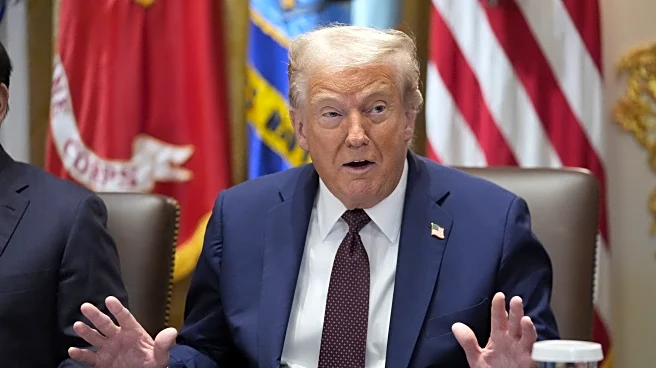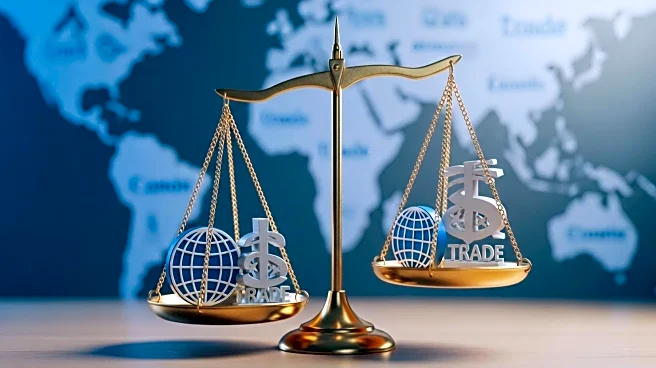What's Happening?
President Trump's tariff policies have significantly impacted the U.S. trade landscape, raising the effective tariff rate to 18.3%, the highest since 1934. These tariffs have increased household costs by an average of $2,400 annually, affecting consumer goods like clothing. Legal challenges have arisen, with courts ruling the tariffs illegal under the International Emergency Economic Powers Act (IEEPA), arguing they exceed its scope. If upheld, these rulings could reduce the tariff rate from 15.8% to 6.4%, altering trade dynamics and federal revenue. The Supreme Court's decision will be crucial, potentially reshaping global trade norms and impacting sectors like manufacturing, agriculture, and logistics.
Why It's Important?
The economic impact of Trump's tariffs is substantial, with J.P. Morgan estimating a 1.1% GDP loss due to tariffs and retaliatory measures. Middle-class households face significant financial strain, with a projected $22,000 lifetime income erosion. Tariffs act as a regressive tax, disproportionately affecting lower-income households. Sectors like agriculture and durable manufacturing are particularly vulnerable, experiencing output and employment declines. Investors must navigate the uncertainty tax, prioritizing sectors less exposed to trade volatility, such as technology and healthcare, while hedging against currency fluctuations.
What's Next?
The Supreme Court's decision will be pivotal in determining the future of U.S. trade policy. A ruling against the tariffs could lead to more reciprocal trade frameworks, reducing uncertainty for businesses. Conversely, a pro-tariff outcome may embolden future unilateral actions, fragmenting global trade norms. Investors should focus on sectors with strong domestic demand or those benefiting from nearshoring trends. Diversifying portfolios across regions and asset classes can mitigate risks from potential trade wars.












